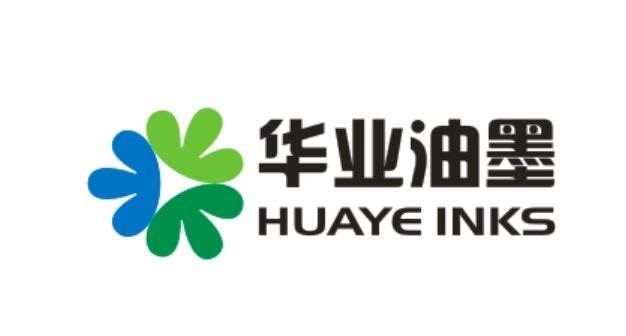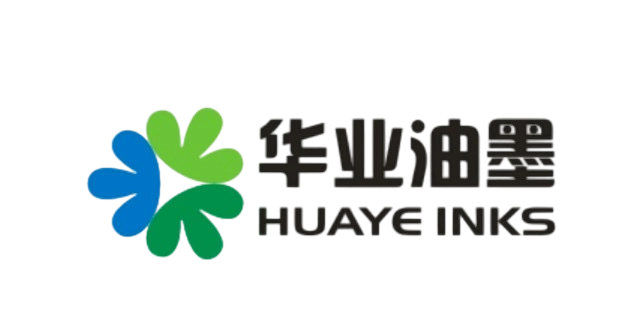Syans ki anba Enk Koulè UV ak Ròl li nan Estabilite Koulè a
Sèkri anba wèn enk koulè UV ki dòm longem tan an ap reveye nan chimikòlaji enjèn ak teknik kouraj tou lèt. Enk tradisyonèl yo ap sèvi ak solvant ki ap evapòre an kous tan, men impresyon UV la pran yon lòt apròch. Lè li rivizite ak limyè, chimi espesyal yo ki rele yo fotoinisiyatè yo koumanse yon reyaksyon ki tounen enk likid lan an kouch solid yo apre yon ti tan. Sa ki pral arive aprè sa se yon bagay ki fèb vre nan nivo mikroskopik: kouch ki kouraje yo kreye lyen fòt ant molekil yo ki panse pigman yo solidman. Dapre dènye test yo ki sòti nan Rapò Dourabite Imprime 2023, metòd sa a redwi dègradasyon ak domaj yo dèyè faktè ekstèn yo d'apre tankou twa sètim parapò ak enk tradisyonèl yo ki baze sou solvant. Sa vle di ke impresyon yo rete vivan epi yo pa bezwen kounya antretan oubyen ranplase yo sou yon bò sou yon lòt longèm tan.
| Karakteristik | Koulè UV | Enk nòmal |
|---|---|---|
| Metòd kouraj | Polimerizasyon avèk limyè UV | Evapòrasyon solvant la |
| Rezistans pou pèdi koulè | dourabite 8-12 ane nan eksteryè | dourabite 3-5 ane nan eksteryè |
| Impak Environneman | VOC ba, pa deplasyon ozon | Emisyon solvant yo wo |
Fòmil lank modèn yo gen ladan yo estabilizatè tankou HALS (estabilizatè limyè amine ki gen obstak) ki travay kont radikal gratis sa yo ki lakòz pwoblèm lè yo ekspoze a reyon UV. Sa ede koulè yo rete bèl menm apre plizyè èdtan nan limyè solèy la. Anpil manifaktirè tèt kounye a vante nivo pite pigman alantou 98%, sa ki lakòz pi rich ton nwa ak koulè pi vibran nan tout spectre a. Rezistans grate te vin pi bon tou gras a amelyorasyon nan oligomè akrilat. Rezilta laboratwa yo montre ke sa yo lank pi nouvo ka reziste apeprè senk fwa plis fwotman konpare ak sa ki te estanda jis kèk ane de sa.
Pou insight nan evolisyon estanda anviwònman kondwi inovasyon lank UV, gade 2024 Rapò sou dirab materyèl enprime .
Durabilite Long tèm nan UV-enprime grafik nan deyò ak andedan kay la anviwònman
Durabilite nan lank koulè UV se reyèlman yon bagay espesyal paske nan ki jan li estriktire nan yon nivo chimik. Pigman yo rete nan kouch pwoteksyon sa a ki fèt nan pwosesis pou yo konekte. Lè nou kouri tès sa yo aje akselere swiv pwotokòl Q SUN Xe 3, sa nou jwenn se byen enpresyonan. Apre mete lank UV nan 1000 èdtan ekspoze a limyè UV difisil, li toujou kenbe apeprè 85% nan fòs koulè orijinal li yo. Sa a kalite pèfòmans tradui nan apeprè senk ane valè nan mond reyèl deyò mete ak dlo. Ankèt nòmal pa kenbe lontan osi byen. Pifò lank estanda kòmanse fennen byen vit, pèdi mwatye nan entansite koulè yo nan sèlman sis mwa lè yo ekspoze a kondisyon menm jan an.
Ki sa k fè lank UV yo dire pi lontan?
Pwosesis la instant sere kreye yon fò lyen molekilè ant lank ak substra, diminye domaj fwotman pa 60% konpare ak lank ki baze sou sòlvan. Pigman UV-rezistan defye longèdonn danjere, kenbe ""E koulè devyasyon anba 2.0 pou 24+ mwa nan aplikasyon pou deyò.
Pou fè travay deyò: lank UV nan limyè solèy la, lapli ak move tan ekstrèm
Yo fè lank koulè UV pou l reziste:
- Endèks UV anyèl ki depase 8
- Lapli ki depase 1,200 mm/ane
- Tanperati a chanje ant -20°C ak 45°C
Enstalasyon bò lanmè montre 90% retansyon koulè apre de zan, menm anba korozyon espre sèl, depase lank ki baze sou epoksid pa yon marge 3: 1 nan tès chanm-bouyon sèl.
Aplikasyon andedan kay la: Kenbe vibran nan magazen, mize ak biwo
Nan mitan kontrole (20-25°C, ≤50% idwatite), UV print ret 98% nan koulè orijinal li pou 5-7 lane. Disple mizayal ki itilize UV enk genyen mwens de 5% ∆E aprè yon dekad sou 75 lux eclairaj - esansyèl pou konsève atwòk ak kohérans marke.
Etidèt ka: Ranzman 5 lane nan UV ranje koulè a nan afichaj ekstèyò
Yon panomil sou lwaye a te ekspoze 12h solèy chak jou te kenbe 82% presizyon koulè aprè 5 lane. Imprime a te sibvivre 90+ mph vant ak tanpèt granis yo san pa kase, demontre rezistans UV krikografi nan kondisyon ekstrem.
Atenn maksim m vannaj koulè a travè UV enk ak sinjiji avè Substrat
Pi fòt tan koulè nan UV enk koulè pou enprime rich ak sature
Enk koulè UV ap pèmèt konsantrasyon koulè 30-40% pi eleve ke enk konvansyonèl (Jounal Materyèl PrintTech 2023). Ak sa, konsa ou bezwen mwens kouch enk pou rann opakite a total sanke intensite koulè a ap amelyore. Imprimant ki itilize formulasyon UV la rapòte amelyorasyon 25% nan kovèti gamut CMYK parapò ak solvant tradisyonèl.
Kòman Chwa Materyèl la Amelyore Briyan koulè ak Klarite
Kopatibilite materyèl la enfliyense jiskap 60% imakt vizyèl la. Materyò ak enèji sifas ≥40 dynes/cm² fè pousive apwopriye pou etalaj enk la ak refleksyon liy la:
| Kalite Materyèl | Enèji Sifas (dynes/cm²) | Amelyorasyon Briyan Koulè |
|---|---|---|
| Akrilik laj | 42 | 35% vs. fini mat |
| Metal anodize | 45 | 28% vs. sifas netrite |
| Papye avek kouti UV | 38 | 22% parapò ak nivo nòmal la |
Synerji sa a minimize difizyon lwat, sa ki fè koulè yo sanble 20-30% pi vivid sou menm kondisyon eclairaj.
Refleksyon Spektral ak Presizyon Koulè nan Kich nan Enkre UV
Polimerizasyon rapid pwodwi kich UV ak presizyon refleksyon spektral 95-98% nan longè d'ond 380-700nm (Institi Sèl Koulò 2023). Sa pote Delta E valè yo ≤1,5 - anba nivo pèsepsyon inan - pou konsistanse fidelite koulè pou:
- Dispositif vante yo ki bezwen koulè marka aksak (derive Pantone <0,8%)
- Reproduksyon mizeyal ki gen besoin akirati istòrik
- Panndo akchitekti ki bezwen estabilite pou plizyè dekad
Defi Environman yo ak longevite UV nan kondisyon reyèl la
Rezistans UV nan Enkre Pigman sou Eksposisyon Prolonje nan Solèy
Fòmilasyon espesyal ink la kolor UV gen nan fotostabilizatè ki anrejistre rayo UV ki kapab domaje yo avan yo atenn molekil pigman yo. Ink yo ki koutin vin pèdi koulè yo vites lè yo kite dehò, pedant 50% nan entansite koulè yo nan yon lane sèl. Men imaj yo ki fèt avèk teknoloji kourant UV yo rete vivan pou anpil pi long tan, konsève anviwon 90% nan orijinal yo menm aprè twa lane sòti nan sòley diwèk. Ki sa ki fè sa posib? Sèkèt la chache nan oligomè aktilik yo ki kreye yon espèt barik pou ink la sèche, kreye sa ekspè yo rele yon matris polimerik ki aji tankou yon armi pou anpeche dekoloraj.
Enpak nan Omayisyon, Tanperati ak Polisyon Aiyèn sou Tan Imprime a Dimeye
Enk standar yo gen tendans pou sòti oswa koule lè yo ekspoze a nivo eleve tanperati, alòske enk UV la gen yon struktò espesyal k ap bloke li sòsipi mwayen ke sa yo fè. Test labo yo montre ke materyèl yo ki imprime avèk UV kapab reziste kondisyon ki pi difisil yo - nou ap pale de 98% tanperati ki kenbe pou 5,000 ew pou san sòti oswa pwoblèm. Sa ki pi etonnan an, se kapasitel pou yo reziste tout ekstrem tanperati, depi mwens 30 degre Selizis pou pale de 80 degre Selizis, sa ki fè yo ideyal pou panok yo ki dwe rete deyò pou tout sazonalite a. Epi nou pa mèt oublier vila kote kalite aiy la pa bon an. Sifas sèlmanch la ankre yon barik pou empèche pouwè a antre nan enpremyon an, se sa ki fè li pèdi koulè a 30% pi lentman parapò ak enpremyon normale yo sou ekspozisyon kontinie pou brousse vil yo ak ozon an.
Milie kòt yo vs. Milie urbèn yo: Kòman lokalizasyon an afekte pèfòmans enk UV
Materyòl imprime UV pa tendans pou kraze 40% pi vit lè yo ekspoze pou sel la nan tan proch de kote a, alòske yo ki kouvre ak UV la fèt byen lè yo bezwen plaje a oswa nan vil la. Ki sa ki fè sa mache? Revetisman espesyal sou ink sa yo anpeche krital sel yo pou fòme, sa ki an jeneral fè vinil la pral tonbe an degradasyon an. Antouka, milye urbèn prezante defi diferan. Tès montre ke UV kouvre imprimante kapab tann kontra ase azotik nan echò oto yo preske de fwa alòske opsyon sòlvan yo. Sa enpòtan anpil pou bagay tankou pannefò yo ak revetisman bati yo ki bezwen tounen lisib nan tout kondisyon meteyo san fade tro vites.
Sèkson FAK
Ki sa se UV koulè ink ak kòman l mache?
UV koulè ink se yon tip ink ki itilize limyè ultraviolet (UV) pou kouraj olye evaporesans sòlvan an. Fotoinisiyatè nan ink la deklenche yon reyaksyon chimik lè l ap ekspoze pou limyè UV, kounya ink likid la an solid lachape vit.
Kòman UV ink print dure longtan?
UV ink print kapab dure anpil pi long ke enk tradisyonèl yo. Yo ofri 8-12 lane de dore nan ekstèye a, reziste dekolore, efritman ak usin.
Kèl bonèn anviwonman yo ak UV color ink?
UV color ink gen yon fèb enpak anviwonman paske l emit yon fèb nivo de senyatif organik volatil (VOCs) epi l pa eskepse kouch ozon an, sanble ak enk solvant yo.
Kòman UV ink ap fè li nan tan mechant?
UV ink fèt pou tann kondisyon dous yo, tankou endèks UV eleve, pliye abondan ak ekstrem tanperati, konsève entegrite koulè a menm nan kondisyon sa yo.
Est-ce que UV ink kapab itilize nan interyè ak eksteryè?
Wi, UV ink vèsati ak adapte pou tou de aplikasyon nan kay ak deyò. Nan kay, li kenbe vivasite a nan milye kontrole tankou nan magazen, mize ak biwo.



